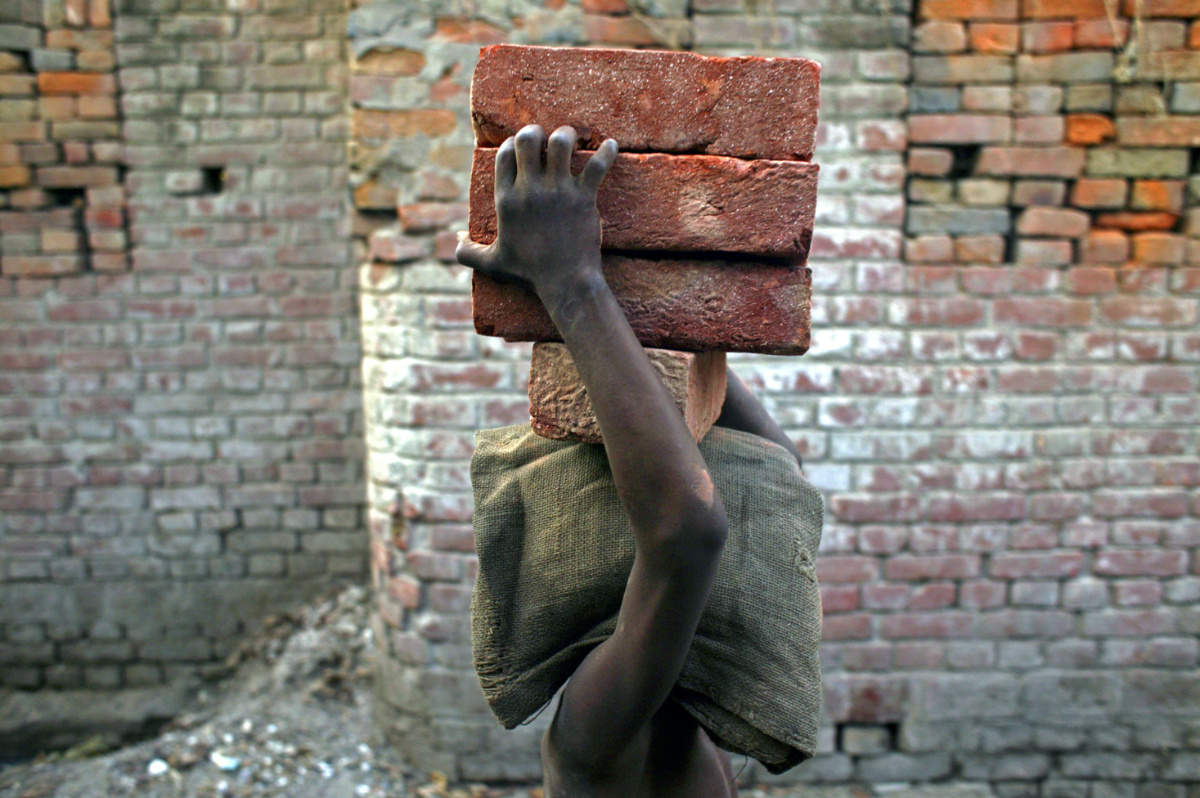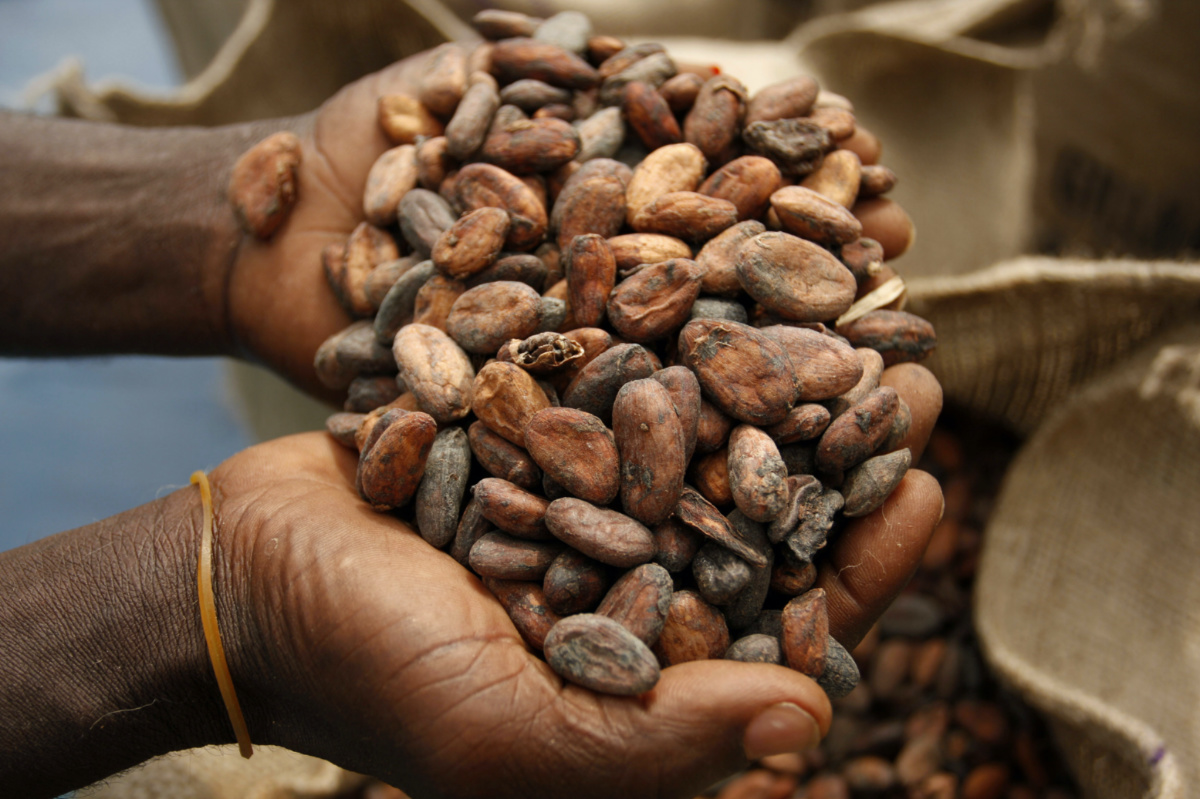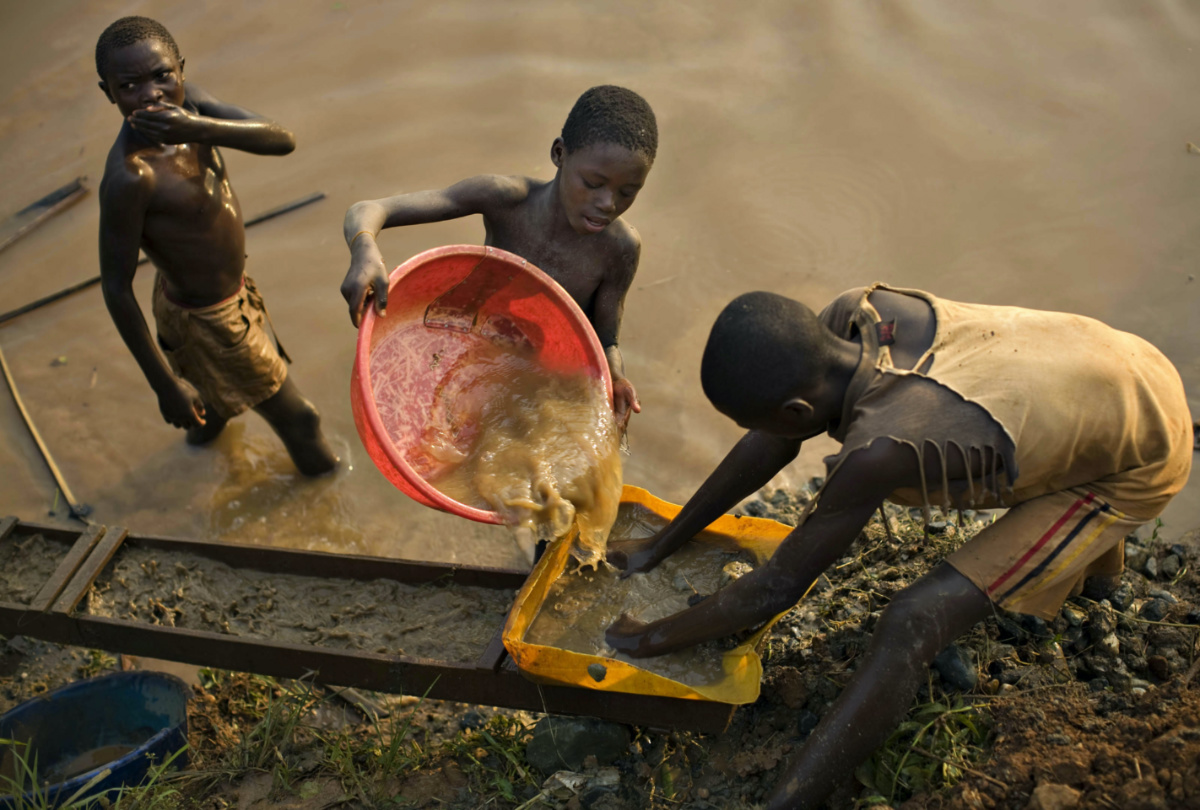
EMELINE WUILBERCQ, of Thomson Reuters Foundation, reports on how the coronavirus pandemic impacted the fight against child labour…
For Ivorian police commissioner Luc Zaka, 2021 was an especially good year. He and his team rescued more than 1,750 children from harsh work on the country’s cocoa plantations, and helped put several traffickers behind bars.
“We had to do everything possible to ensure our cocoa is quality cocoa that is not produced by children,” said Zaka, who heads a specialist unit fighting child labour in Ivory Coast – the world’s biggest cocoa supplier.

Dried cocoa beans are packed in hessian sacks on a cocoa farm near Amankwakram in Western Ghana on the border with Ivory coast, on 14th February. PICTURE: Reuters/Hereward Holland.
Named International Year for the Elimination of Child Labour, 2021 was meant to boost such efforts to stamp out the practice. But despite some success stories like Zaka’s, global progress was patchy and COVID-19 fuelled abuses, experts say. In Ivory Coast, where close to one million children still work in the cocoa sector, rescue operations have multiplied in recent years following pressure over labour exploitation from EU lawmakers and ethically-minded chocolate consumers.
In May, Ivorian authorities carried out their biggest ever raid, leading to the arrest of about 25 child traffickers, Zaka said. Five of them were later given 20-year jail sentences.
“Policymakers took their eye off the ball to one degree or another, and we need renewed focus and resources and creative ideas.”
– Benjamin Smith, a child labour specialist at the International Labour Organization on the impact of COVID-19 on the fight against child labour.
“This is a strong signal from the government to make sure this doesn’t continue. Other large-scale operations will follow,” he said by phone.
Many of the children working on Ivorian cocoa farms are trafficked from neighbouring Mali and Burkina Faso, where conflict has exacerbated the impact of the pandemic and driven more children into work.
Even before COVID-19 shut schools and fuelled poverty worldwide, child labour had increased for the first time in 20 years, according to UN agencies.
The number of child labourers rose to 160 million in 2020 from 152 million in 2016, the United Nations said earlier this year, with the sharpest growth in Africa – already home to most of the world’s child workers.
While many nations have taken important steps to crack down on underage work, governments must redouble their efforts, said Benjamin Smith, a child labour specialist at the International Labour Organization.
“Policymakers took their eye off the ball to one degree or another, and we need renewed focus and resources and creative ideas,” Smith said.
“But there’s a lot of headwinds,” he said, mentioning a lack of job creation and the challenges of boosting education access in Africa.
The private sector, trade unions and civil society groups should also play a bigger role in helping meet a global goal to eradicate child labour by 2025, he added.

A child labourer carries bricks in Bihar-e-Sharif town, about 60 kilometres from Patna, India, on 9th April, 2007. PICTURE: Reuters/Adeel Halim
But a lack of funds often hampers their initiatives.
In the north-eastern Congolese province of Ituri, it was a shortage of financial support that scuppered Augustin Bedidjo’s efforts to fight child labour in the Democratic Republic of Congo’s mines through his grassroots charity.
Bedidjo created comic strips translated into local languages to distribute to parents, officials and mine operators to raise awareness of the dangers of mining – considered one of the worst forms of child labour by the United Nations.
His visual stories highlighted the dangers faced by children working in and around the mines, including sexual abuse and bonded labour, but he was unable to raise enough money from donors to distribute the comics and the project is now on hold.
“As a local organisation, we have ideas, initiatives, but…we have no funds to carry out our actions,” Bedidjo told the Thomson Reuters Foundation by phone.
He said the pandemic had drawn more children into the country’s mines, which produce metals including gold and the cobalt used in electric cars and smartphone batteries, saying many were at increased risk of forced labour and marriage.
“When schools were closed, children who were attending school were drawn into the mining activities and most of these children did not return…The impact is noticeable to this day,” he said.
Without urgent action, another 8.9 million children around the world look set to become child labourers by the end of 2022, the United Nations has said.
“This year we’ve seen huge setbacks in the effort to end child labour, primarily because of the COVID-19 pandemic,” said Jo Becker, children’s rights advocacy director at Human Rights Watch.
She urged governments to use the same strategies that allowed them to make breakthroughs in reducing child labour between 2000 and 2016 to reverse the pandemic’s impact.
“Three things contributed to that success – expanding children’s access to education, providing cash transfers or child allowances (monthly stipends) to families, and strong child labour laws that are effectively enforced,” she said.
The UN target to end child labour within four years, which critics have said is impractical and unrealistic, could face added pressure from surging demand for cobalt as nations seek to reduce their carbon emissions by shifting to electric vehicles.
We rely on our readers to fund Sight's work - become a financial supporter today!
For more information, head to our Subscriber's page.
Demand for cobalt is expected to grow four-fold by 2030, with about 70 per cent of the metal produced in Congo’s mines – sometimes by children in the large informal mining sector.
“The world is trying to become more sustainable,” said Benafsha Delgado, senior program manager at the UN Global Compact, which encourages firms to adopt sustainable policies.
“But by default, it may mean that we are harming people, and more specifically, children,” she said.
A cobalt mining rush will lead to a rise in the number of children working in the mines and push more girls into sexual exploitation in mining hubs, Delgado added.

Boys pan for gold on a riverside at Iga Barriere, 25 kilometres from Bunia, in the resource-rich Ituri region of eastern Congo, on 16th February, 2009. PICTURE: Reuters/Finbarr O’Reilly.
A survey by charity Save The Children Germany of more than 400 artisanal miners and children in Congo’s southern Lualaba province found that nearly one-third of children were not in school and one in six were working.
Companies must recognise artisanal mining, which accounts for 15 to 30 per cent of Congolese production, in their supply chain and push for formalisation, said Anna Thinius, the charity’s sustainable supply chains manager.
“What’s happened in the last years is that companies try to de-risk and disengage from artisanal and small-scale mining to basically protect themselves because there’s been quite a lot of media attention in terms of human rights violations,” she said.
“That doesn’t solve the situation. Because, in the end, artisanal small-scale mined cobalt always ends up in the supply chain of big companies because it’s mixed and you can’t trace it very well.”
For Delgado, an EU push for mandatory human rights and environmental due diligence will make it hard for European companies to turn a blind eye to child labour and other rights violations in their supply chains.
“This is a really good year for companies to take addressing child labour seriously,” she said.
“If they’re going to ever do anything meaningful, this is the time to do it.”





